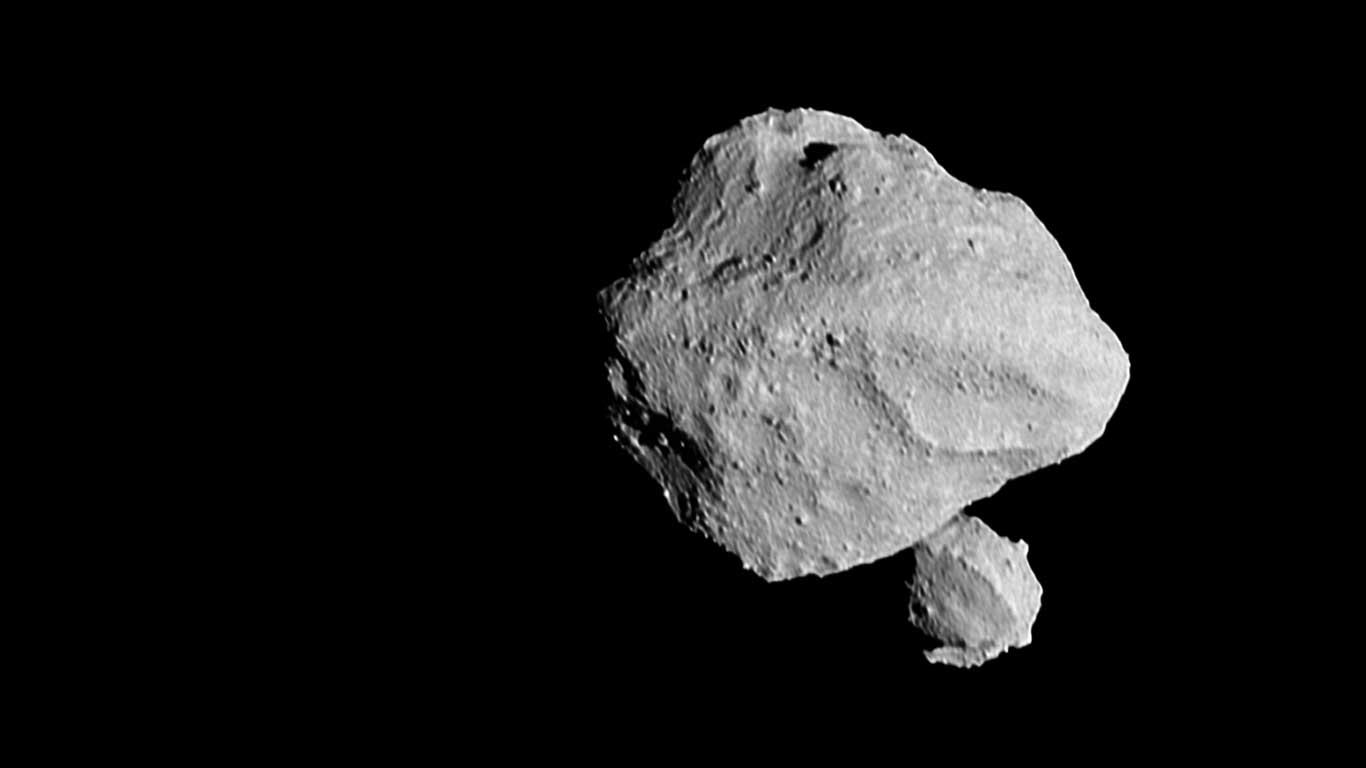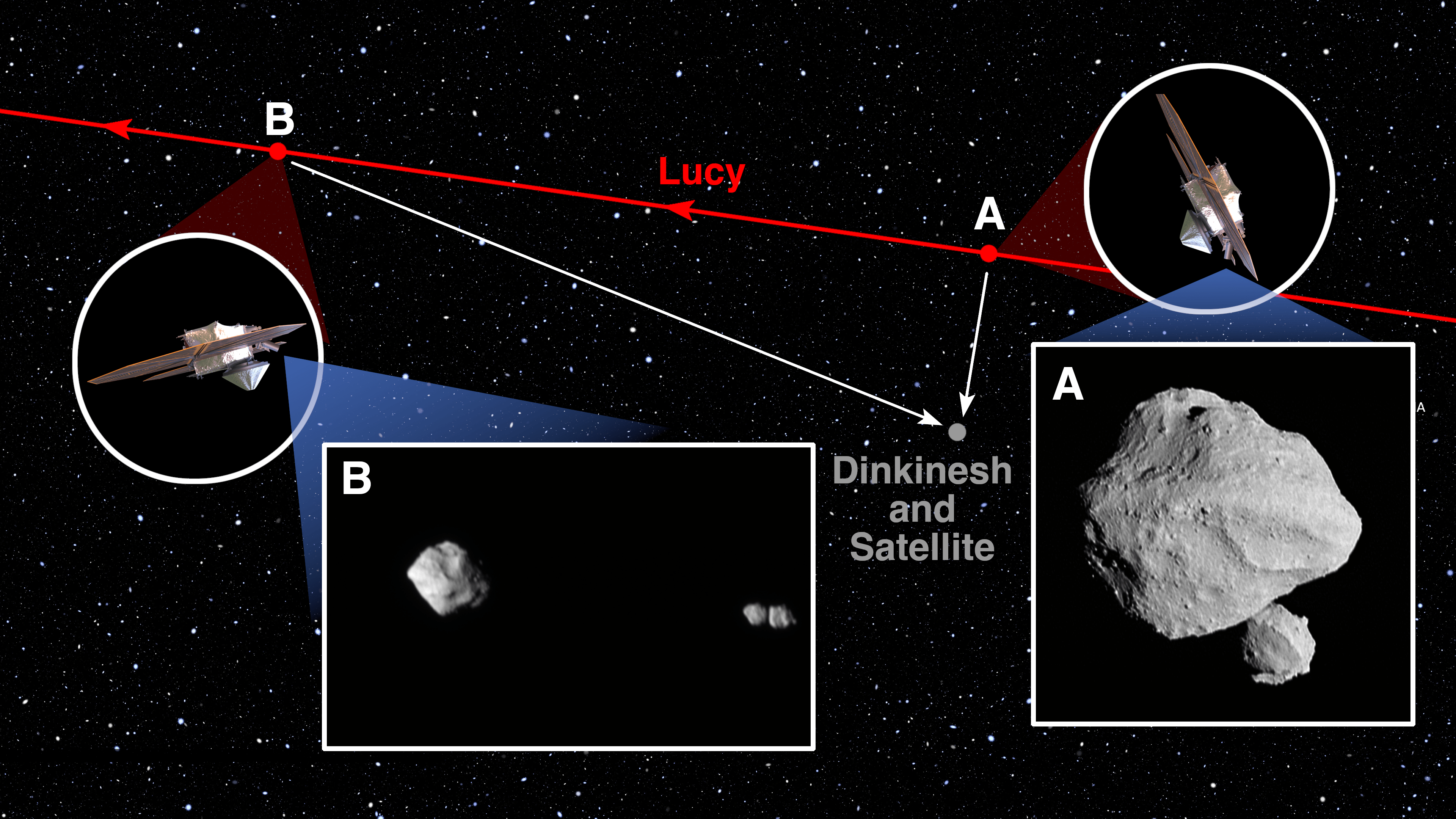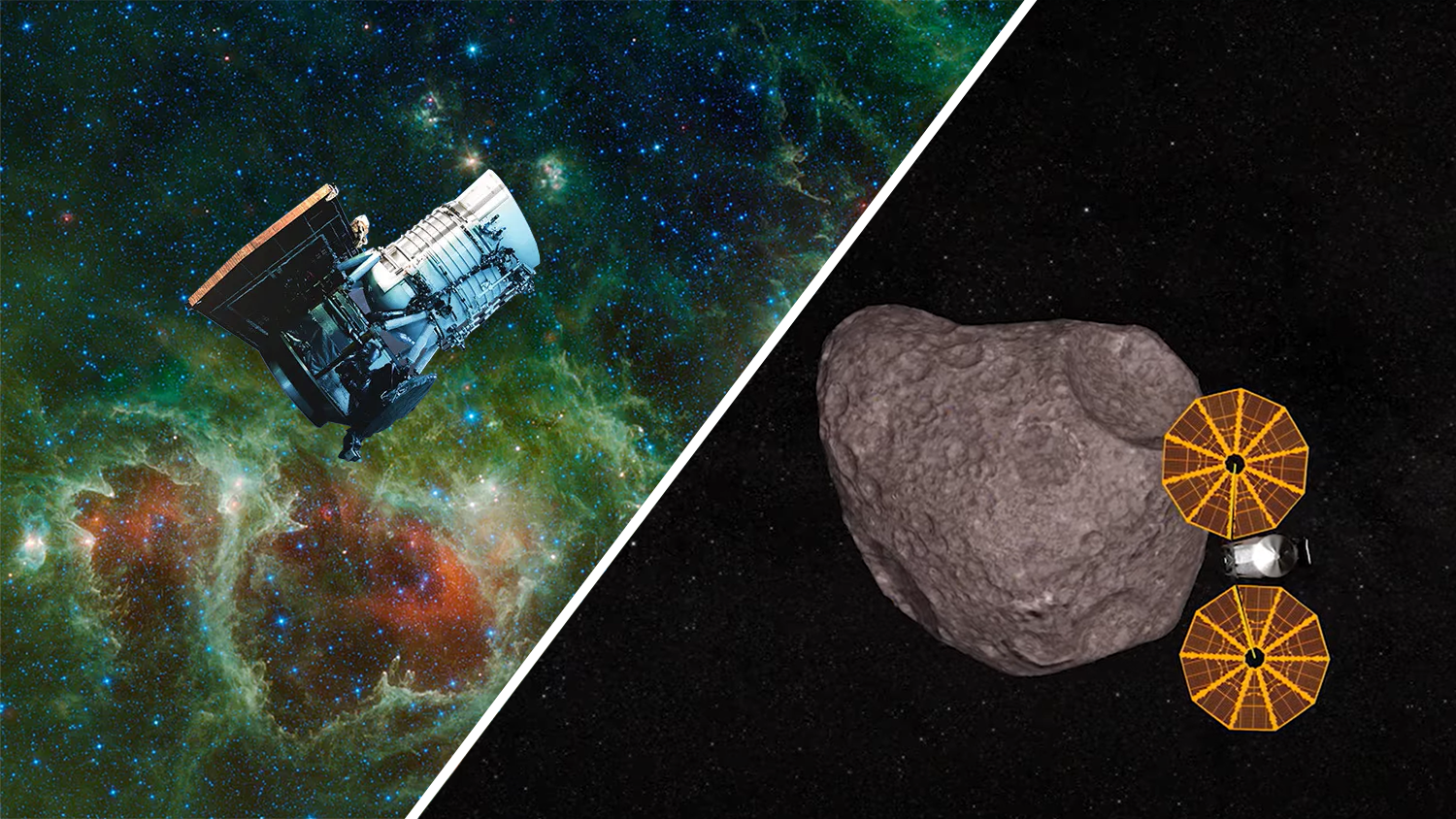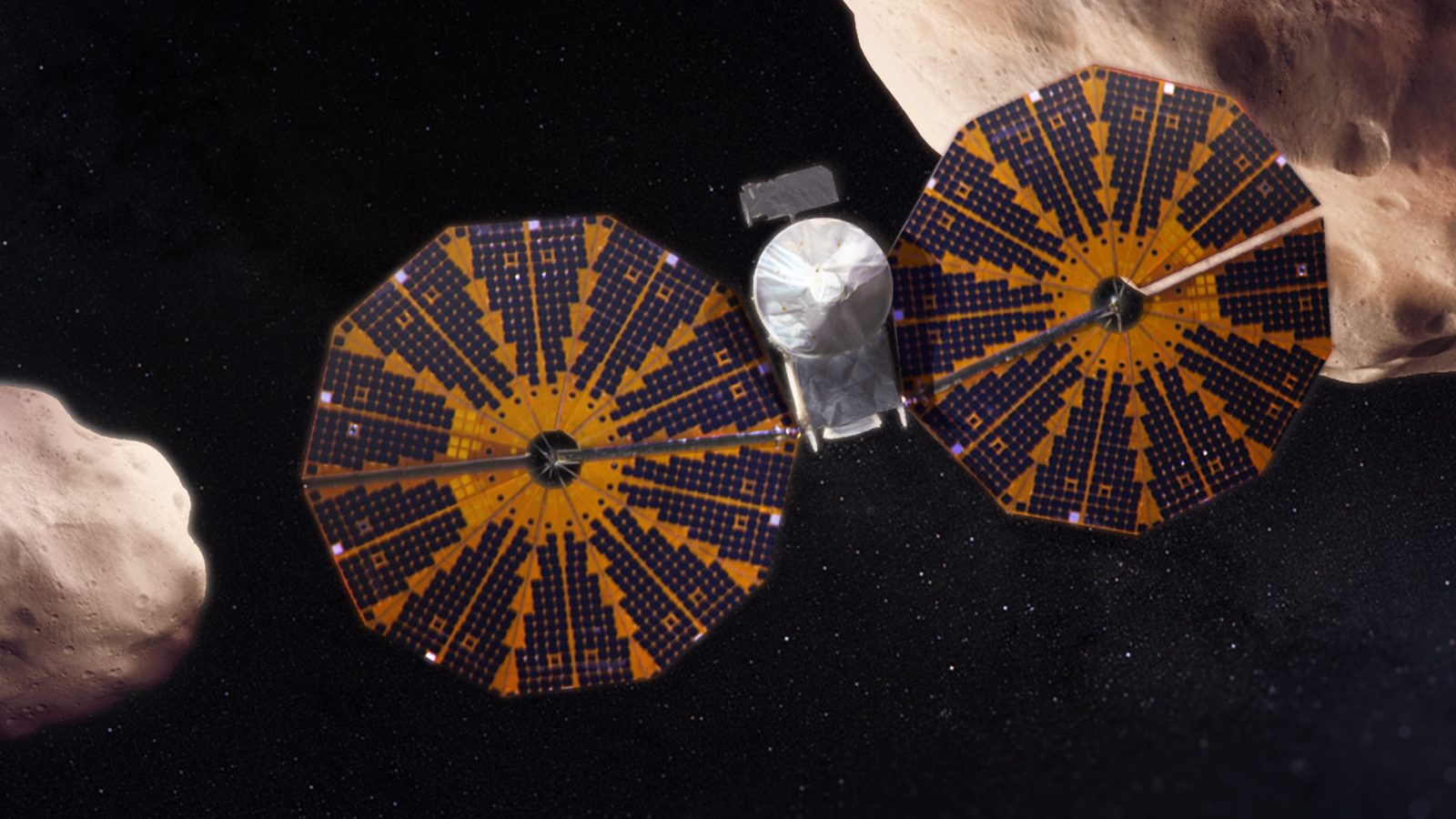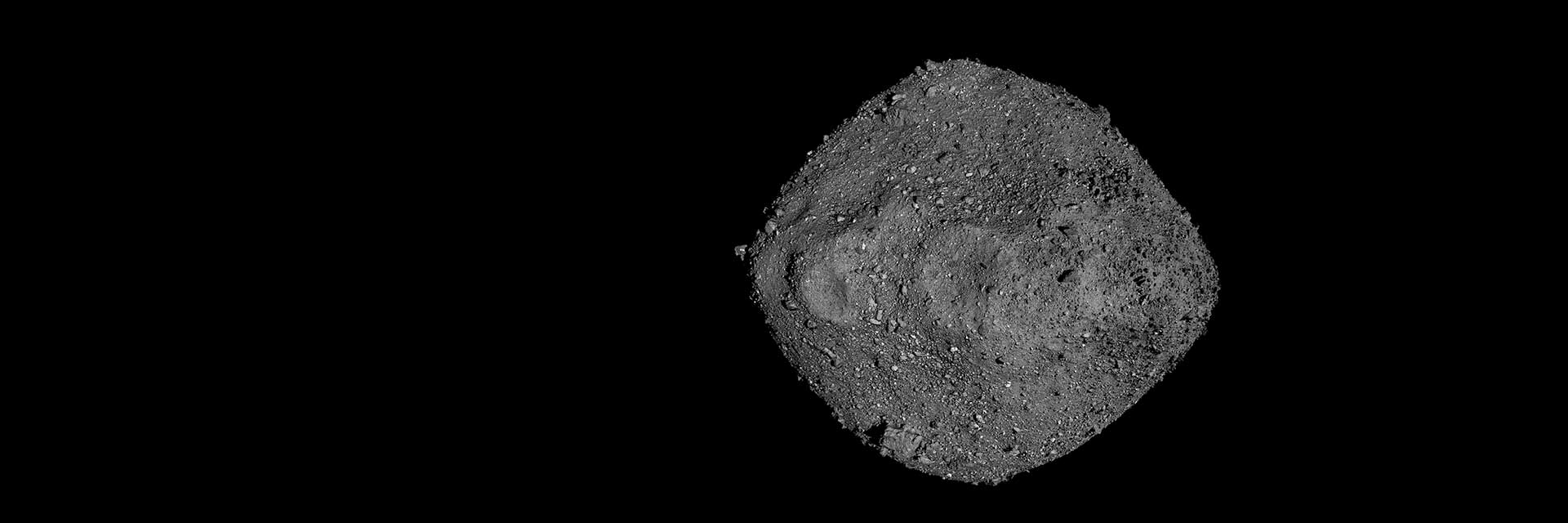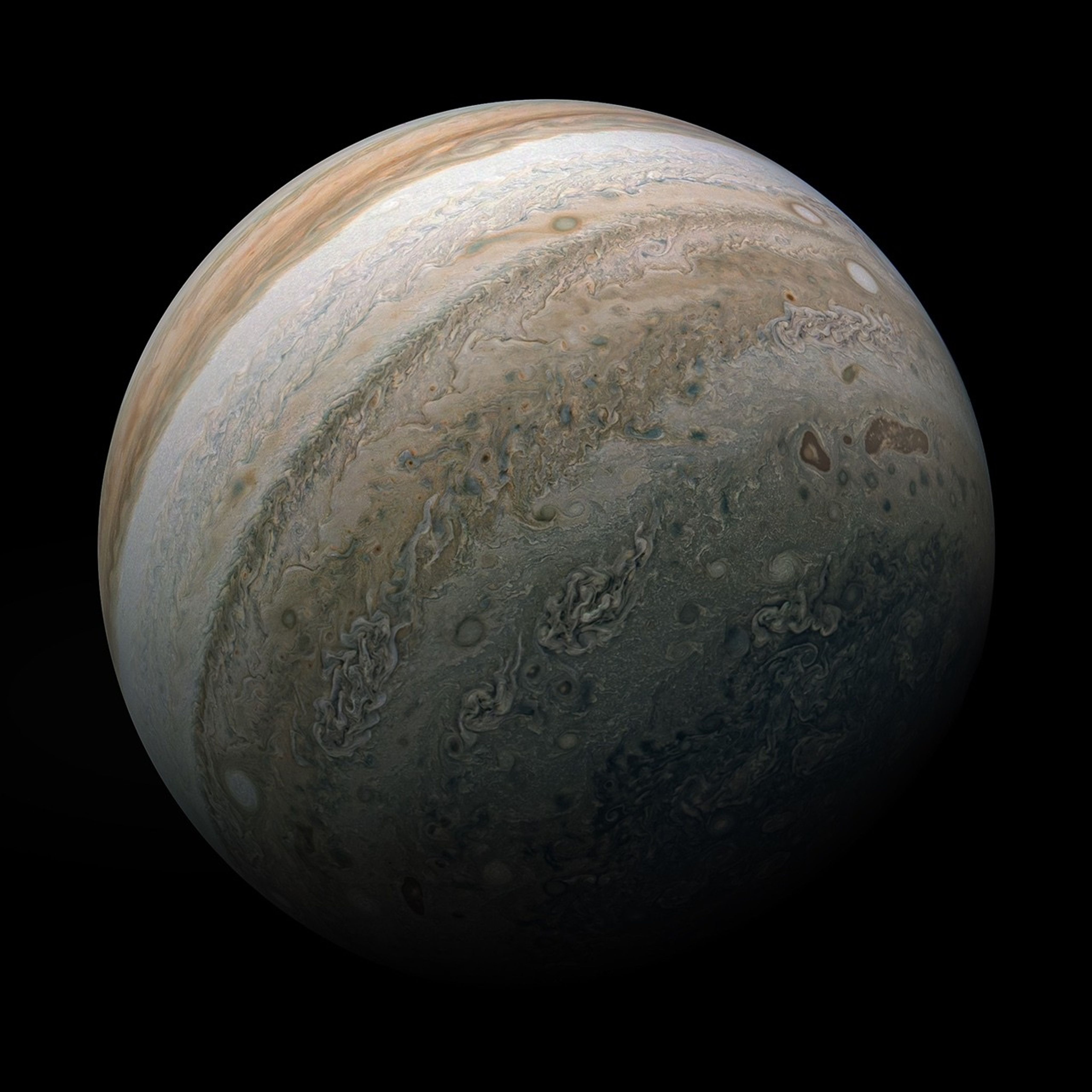Asteroid Dinkinesh Overview
Dinkinesh is a small asteroid located in the main asteroid belt between Mars and Jupiter. On Nov. 1, 2023, NASA’s Lucy spacecraft flew by the asteroid, and sent back images showing that Dinkinesh has a moon, which has been named Selam.
As Lucy continued to return data, the mission team was surprised to discover that Selam is a contact binary. In other words, it is made of two smaller objects touching each other. It's the first contact binary discovered orbiting an asteroid.
In the first downlinked images of Dinkinesh and Selam, which were taken at closest approach, the two lobes of the contact binary appeared one behind the other from Lucy's point of view. Only when the team downlinked additional images, captured in the minutes around the encounter, was the true nature of this object revealed.
“Contact binaries seem to be fairly common in the solar system,” said John Spencer, Lucy deputy project scientist, of the Boulder, Colorado, branch of the Southwest Research Institute. “We haven’t seen many up close, and we’ve never seen one orbiting another asteroid. We’d been puzzling over odd variations in Dinkinesh’s brightness that we saw on approach, which gave us a hint that Dinkinesh might have a moon of some sort, but we never suspected anything so bizarre!”
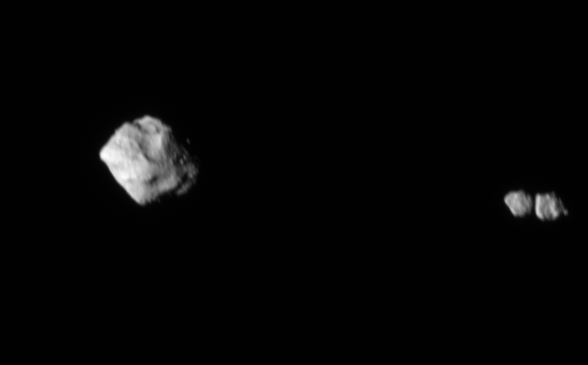
From analysis of the first available images, the Lucy team estimates that Dinkinesh is approximately 0.5 miles (790 meters) at its widest, while each lobe on Selam is about 0.15 miles (220 meters) in size.
Dinkinesh and its moon are the first two of at least 11 asteroids that Lucy plans to explore over its 12-year journey.
After skimming the inner edge of the main asteroid belt, Lucy is heading back toward Earth for a gravity assist in December 2024. That close flyby will propel the spacecraft back through the main asteroid belt, where it will observe asteroid Donaldjohanson in 2025, and then on to the Trojan asteroids in 2027. Trojan asteroids orbit in two “swarms” that lead and follow Jupiter in its orbit around the Sun.
NASA’s Lucy Spacecraft Discovers 2nd Asteroid During Dinkinesh Flyby
On Nov. 1, NASA’s Lucy spacecraft flew by not just its first asteroid, but its first two. The first images…
Read the Story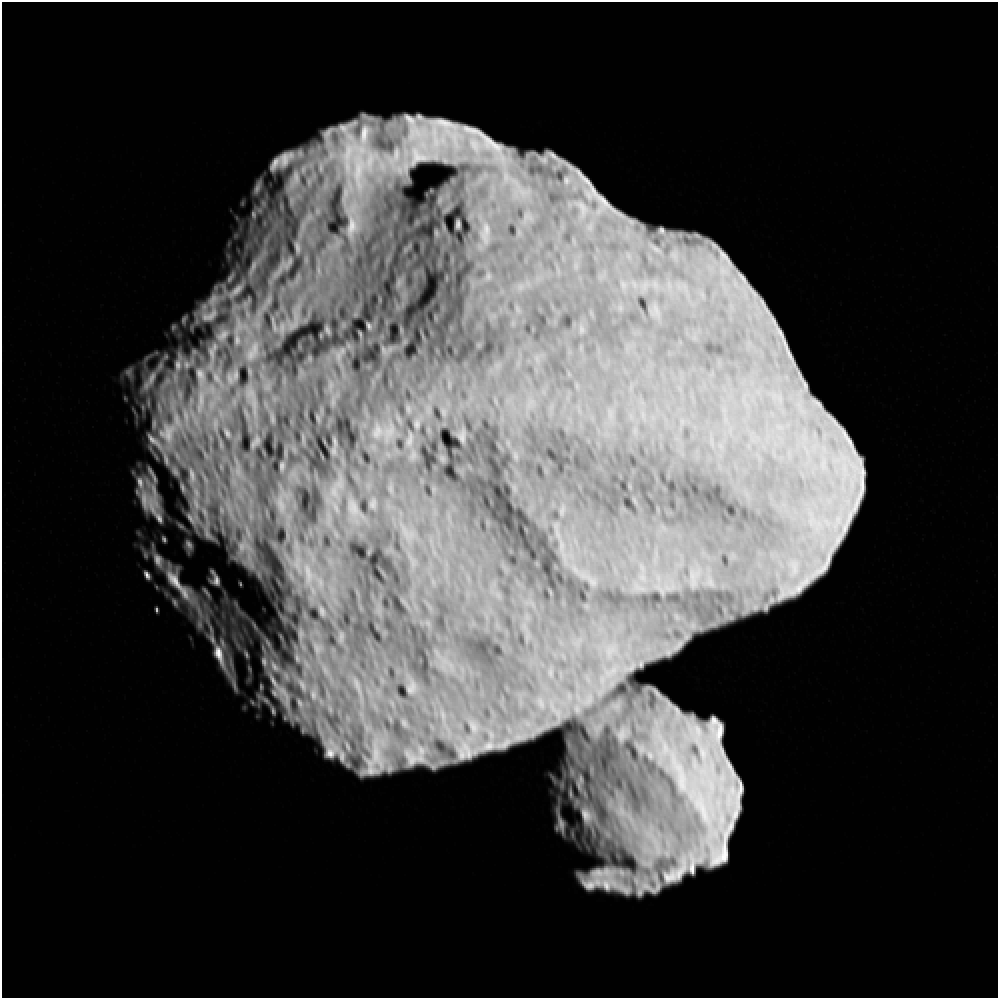
How the Asteroids Got Their Names
Dinkinesh is the Ethiopian name for Lucy, the human-ancestor fossil for which the Lucy mission is named. The fossil was found in Ethiopia. It means "you are marvelous" in Amharic, an Ethiopian language.
In 1999, when the asteroid Dinkinesh was first discovered, it was given the provisional designation 1999 VD57. It earned an official number, (152830), several years later when its orbit was sufficiently well determined. But, like most of the millions of small asteroids in the main asteroid belt, it was left unnamed. However, once the Lucy team identified this asteroid as a target, the team proposed naming it Dinkinesh.
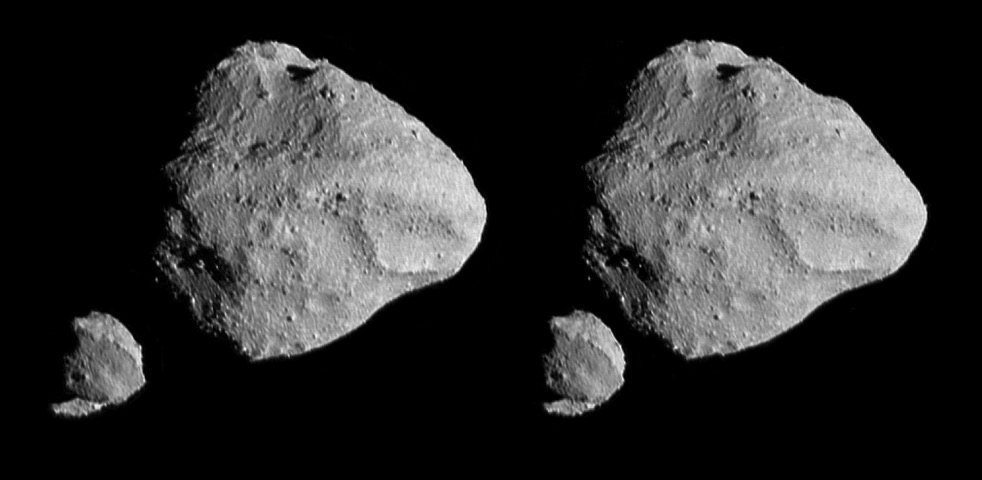
“Dinkinesh really did live up to its name; this is marvelous,” said Hal Levison, Lucy principal investigator, from Southwest Research Institute’s Boulder office.
The mission team named the satellite Selam, which means peace in Amharic, after a fossil of a 3-year-old girl that is sometimes called “Lucy’s baby.”
Featured Content
Lucy Mission Resources
This special resource package is for anyone interested in learning more about NASA's Lucy mission!
Check out our curated collection of content about NASA's Lucy mission, including activities that can be done at home, as well as videos, animations, posters, and online interactives.
Learn More

